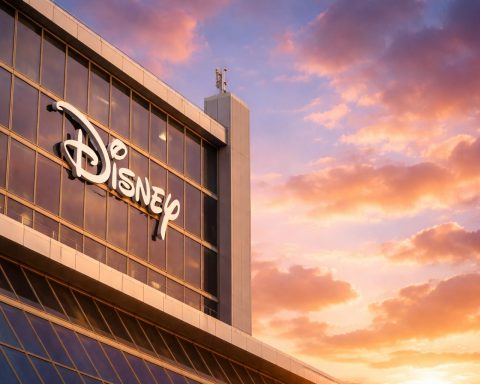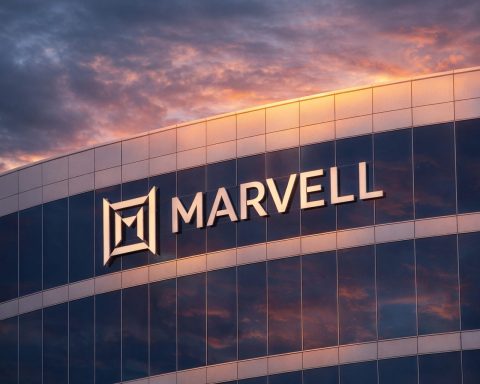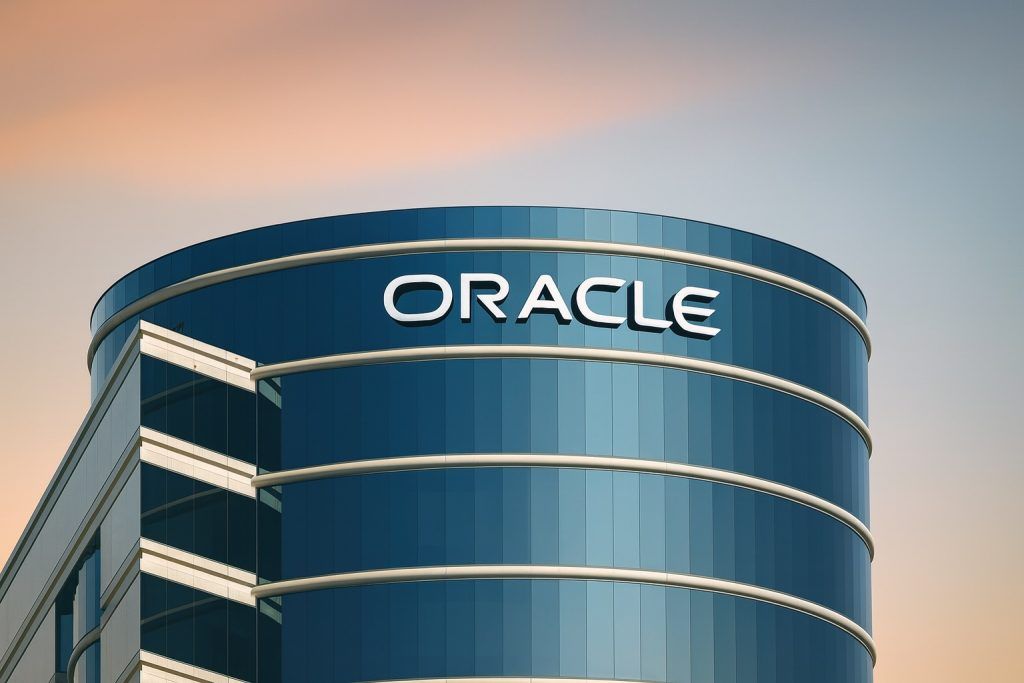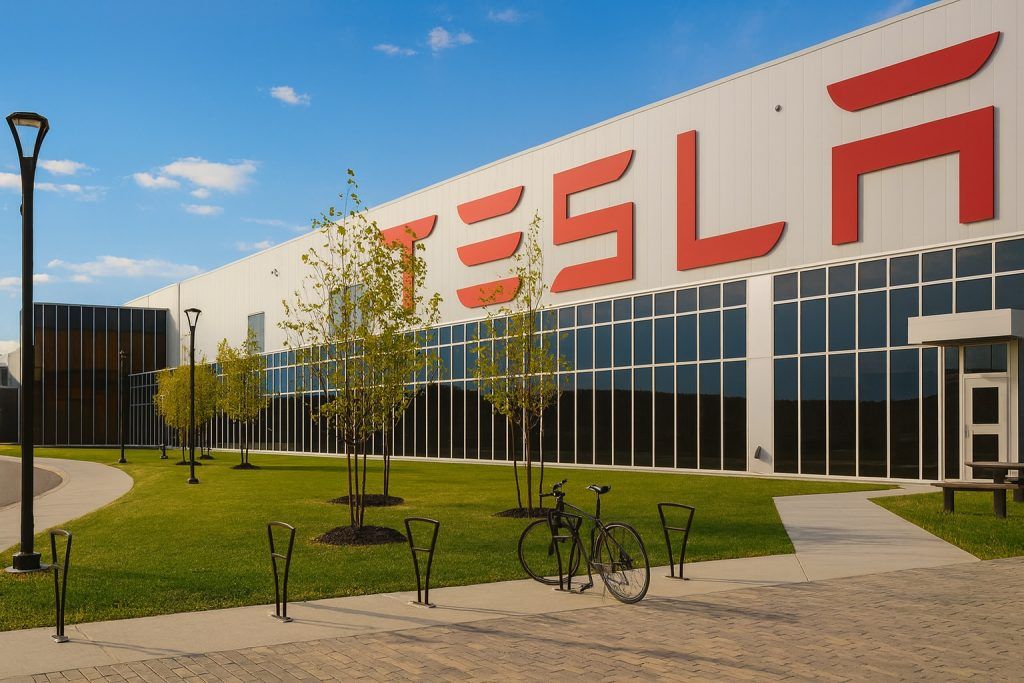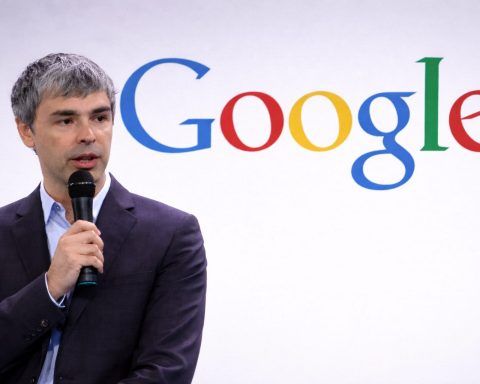- M5 chip arrives in new devices: Apple unveiled its new M5 chip via surprise press releases on October 15, introducing a 14‑inch MacBook Pro, updated iPad Pro, and an upgraded Vision Pro mixed-reality headset – all powered by the M5 for major speed and AI boosts [1] [2]. The base MacBook Pro now starts at $1,599 and supports up to 4 TB storage [3], while the M5 iPad Pro (from $999) gains laptop-like performance and faster charging [4]. The Vision Pro 2 (still $3,499) swaps its M2 chip for M5, enabling 10% sharper visuals, smoother 120 Hz graphics, and longer 2.5 hour battery life with a more comfortable Dual Knit Band [5].
- New iPhones & iOS 26 rollout: Apple’s iPhone 17 lineup (and a new ultra-thin iPhone Air) launched in September with fresh designs and a 3 nm A19 chip that delivers ~20% faster performance and a 16-core Neural Engine for on‑device AI [6]. The ambitious iOS 26 software debuted alongside, featuring a flashy “Liquid Glass” interface and the first wave of built-in generative AI features branded Apple Intelligence [7]. However, early bugs plagued iPhone 17 users – from Wi-Fi drops to camera glitches – prompting Apple to rush out iOS 26.0.1 just two weeks later to fix connectivity issues, patch a font-related security flaw (CVE-2025-43400), and address other glitches [8] [9]. Some headaches (e.g. Face ID failures, battery drain) persist, but another update (iOS 26.1) is expected soon with further bug fixes and new features like AirPods live translation and expanded Apple Intelligence support [10] [11].
- AI features and acquisitions: Apple is doubling down on artificial intelligence across its products. The new iOS 26 “Apple Intelligence” suite brings generative AI to iPhones for things like smart messaging, image editing and personal assistant tasks – largely processed on-device for privacy [12]. To boost its AI prowess, Apple is reportedly in late-stage talks to acqui-hire Prompt AI, a startup behind an AI camera app that recognizes people, pets and objects in smart home video feeds [13] [14]. According to CNBC, Prompt’s team was informed of a pending deal, indicating Apple will absorb the company’s talent and tech (while shutting down its app) to enhance Apple’s own computer vision and home security AI capabilities [15] [16].
- Privacy and regulation clashes: Apple finds itself pushing back on new tech regulations. In Europe, the company is challenging the EU’s Digital Markets Act (DMA) – arguing the law’s forced openness is undermining iPhone security and user experience [17]. Apple claims it had to delay or disable features in the EU (like iPhone-to-PC screen mirroring and an AI-powered AirPods Live Translation feature) because it can’t comply without compromising privacy [18]. Meanwhile in the US, Apple will comply with a new Texas age-verification law for app downloads, but warns the state’s approach “impacts the privacy of users by requiring the collection of sensitive, personally identifiable information to download any app” – even something as simple as a weather app [19]. Apple is updating its tools (like Family Sharing and age APIs) to meet the January 2026 Texas requirements, all while cautioning that such rules could harm user privacy if not carefully implemented [20] [21].
- Executive moves and new partnerships: On the global stage, Apple is shoring up key relationships. CEO Tim Cook visited Beijing on October 16 and met with China’s Minister of Commerce, reaffirming that Apple will “continue to deepen its presence in the Chinese market” despite ongoing trade tensions [22]. And in a major content deal, Apple’s push into streaming sports just scored a victory: the company clinched a five-year agreement for U.S. Formula 1 broadcast rights starting in 2026, taking over from ESPN [23]. The Apple TV app will stream every Grand Prix live (with select sessions free to watch), and Apple TV+ subscribers will get F1’s premium content at no extra charge [24]. Apple Services chief Eddy Cue – himself a racing fan – hailed the F1 partnership as a “huge opportunity” for both Apple and motorsport, expressing hope that this is “what we’re doing forever” [25].
M5 Chip Debuts in New MacBook Pro, iPad Pro and “Vision Pro 2”
Apple has surprised fans with a late-year hardware refresh centered on its next-generation M5 processor. In lieu of a live event, Apple issued a blitz of Newsroom announcements on October 15 introducing an entry-level 14‑inch MacBook Pro, updated 11″ and 13″ iPad Pro models, and a modestly upgraded Apple Vision Pro headset – all powered by the new M5 chip [26] [27]. The M5 is a significant leap forward: Apple says it delivers over 4× the peak GPU performance of the previous M4 generation, and Apple SVP Johny Srouji touted that the M5 “ushers in the next big leap in AI performance for Apple silicon.” [28]
MacBook Pro 14″ (M5, 2025) – The new base MacBook Pro looks identical to 2023’s 14-inch model but swaps in the M5 chipset (with a 10‑core CPU and 10‑core GPU) for a substantial speed boost. Memory bandwidth climbs from 120 GB/s to 153 GB/s, and internal storage is now twice as fast (thanks to an upgraded SSD) [29]. Notably, Apple now offers up to 4 TB of SSD storage on this base configuration (versus a 2 TB max previously) [30]. Despite the performance bump, Apple promises up to 24 hours of battery life on a charge, the longest ever for a MacBook Pro. The laptop’s starting price remains $1,599 in the US, and it comes in Silver or a new Space Black option, matching the higher-end MacBook Pros [31].
iPad Pro (M5, 2025) – Apple’s top-tier tablet line also gets the M5 treatment. The 6th-gen iPad Pro models (11-inch and 13-inch) now boast laptop-class speed, with Apple claiming the M5 gives 3.5× the AI performance of last year’s M4-based iPad Pro [32] and even 5.6× the performance of the older M1 iPad Pro [33]. Beyond raw speed, the new iPad Pros feature Apple’s custom C1X cellular modem for 5G, enabling up to 50% faster mobile data rates than before [34]. They also include a dedicated N1 chip for next-gen Wi‑Fi 7, Bluetooth 6, and Thread connectivity [35] – preparing the iPad for faster networking and smart home integration. Another quality-of-life boost: these iPad Pros support fast charging, getting to 50% battery in roughly 30–35 minutes, which is twice as quick as prior models [36] [37]. Storage read/write speeds have been improved 2× as well [38]. The new M5 iPad Pros start at $999 (11″) and $1,299 (13″) for 128 GB configurations, available in Silver or Space Gray. They ship with iPadOS 26, which brings more desktop-class features like the macOS Preview app and enhanced multitasking, underscoring Apple’s push to make the iPad Pro a true laptop replacement [39].
Vision Pro with M5 (“Vision Pro 2”) – Even Apple’s not-yet-released mixed reality headset is getting a refresh. Apple announced that the Apple Vision Pro, due to launch to consumers in early 2024, will now ship with an M5 chip in place of the originally planned M2 [40] [41]. This interim upgrade – informally dubbed “Vision Pro 2” by some observers – gives the headset a welcome performance uplift before it even hits shelves. According to Apple, the M5 silicon improves the Vision Pro’s display rendering by ~10% and enables a faster 120 Hz refresh rate (up from 90–100 Hz) for smoother visuals and reduced motion blur [42]. On-device AI tasks (like gesture recognition and eye-tracking commands) run 50% faster thanks to the new chip’s beefed-up Neural Engine [43]. Battery life also gets a bump: the updated model gains about 30 minutes more run time, for approximately 2.5 hours of continuous use per battery pack [44].
Beyond the chip swap, the Vision Pro (M5) introduces a redesigned Dual Knit Band for improved comfort and fit on the user’s head [45]. (Early testers of the M2 version had noted that the original strap could feel heavy during extended wear.) The M5 headset will include this new adjustable band in the box, and Apple will even sell the Dual Knit headband separately for $99 to retrofit older units [46] [47]. Apple kept the Vision Pro’s pricing unchanged at $3,499, and the base specs – dual 4K micro-OLED displays, array of 12 cameras and 5 sensors, etc. – remain the same. The M2-based Vision Pro (essentially now the “1.0” model) has reportedly been discontinued and won’t be offered for trade-in upgrades [48] [49]. This stealth launch of a spec-bumped Vision Pro shows Apple’s willingness to iterate rapidly on its AR/VR platform. In fact, industry insiders had anticipated such a move: multiple leaks earlier this month pointed to an imminent “Vision Pro 2” with M5 and a lighter design, aligning with Apple’s official reveal [50]. The upgraded Vision Pro is available to pre-order now (in the US), with shipping expected by late 2025 alongside the device’s long-awaited debut in Apple Stores [51] [52].
iPhone 17 Launch Fallout and the iOS 26 Software Upheaval
Apple’s iPhone 17 series – introduced at the company’s September “Awe Dropping” event – is now in users’ hands, and it’s both impressing and testing early adopters. On the hardware front, the iPhone 17 lineup (consisting of the iPhone 17, 17 Plus, 17 Pro, 17 Pro Max, and a new ultra-slim iPhone Air model) delivered some of the biggest year-over-year improvements in recent memory. The Pro models got a long-awaited design overhaul with a unibody aluminum frame and a prominent new “camera plateau” housing the upgraded lenses [53]. For the first time, Apple’s standard (non-Pro) iPhones also gained the smooth 120 Hz ProMotion displays and Always-On capability that were previously limited to Pro devices [54]. Across the board, screens are brighter (up to 3,000 nits outdoors on Pro models) and tougher, thanks to a new Ceramic Shield 2 glass coating [55]. Perhaps the star of the show is the A19 Bionic chip in the iPhone 17 Pro and Pro Max – Apple’s latest 3 nm silicon. With a 6‑core CPU, 6‑core GPU, and a 16‑core Neural Engine paired to 12 GB RAM, the A19 delivers roughly 15–20% faster CPU/GPU performance over last year’s A18, while dramatically improving sustained performance via a vapor-chamber cooling system [56] [57]. In practical terms, the A19 enables advanced on-device AI (for features like intelligent image editing and personal voice generation) and even “console-quality” gaming on a phone [58] [59]. Apple also squeezed larger batteries into the new iPhones – aided by the space freed from removing the SIM card tray in US models – yielding some impressive endurance gains. The flagship iPhone 17 Pro Max is rated for up to 39 hours of video playback on a single charge (nearly 10 hours more than its iPhone 16 predecessor) [60]. Even the smaller 17 Pro can hit ~33 hours of playback (vs ~24 hrs prior) [61], making the 2025 iPhones Apple’s longest-lasting ever. All iPhone 17 models also transitioned to USB-C ports (complying with EU law), enabling faster wired charging – about 50% in 20 minutes with a high-watt charger – and they support the new Qi2/MagSafe 15 W wireless charging standard [62].
However, as cutting-edge as the iPhone 17 hardware is, the iOS 26 software it shipped with has proven to be a mixed bag. Billed as Apple’s most ambitious iPhone software overhaul since iOS 16, the new iOS 26 introduced a striking translucent look called “Liquid Glass” for system menus and notifications, extensive home screen customization options, smarter widgets, and the first generation of Apple’s on-device generative AI features collectively known as Apple Intelligence [63]. These AI-driven enhancements (which include things like intelligent auto-replies, message summarization, and image creation tools within apps) are largely processed locally on the A-series chip – a privacy-focused approach that sets Apple apart from cloud-based AI services. While conceptually exciting, the iOS 26 launch was marred by bugs, especially on the new iPhone 17 and iPhone Air devices [64] [65]. Within days of release, user forums lit up with reports of intermittent Wi‑Fi and Bluetooth dropouts, cellular network failures (particularly when switching out of Airplane mode), camera app glitches causing strange color artifacts in photos, home screen icons turning blank, and even occasional Face ID authentication failures [66] [67]. The issues were significant enough that Apple moved quickly to issue an emergency patch: iOS 26.0.1 was released just two weeks after iOS 26 hit the public [68].
The iOS 26.0.1 update, released in early October, aimed to steady the ship for iPhone 17 owners. According to Apple’s release notes, the patch “fixes an issue that may cause Wi‑Fi or Bluetooth to disconnect” on iPhone 17 models and resolves a bug “where iPhone 17 models might not connect to the cellular network after leaving Airplane Mode” [69]. It also squashes the odd camera artifacts some users saw (green/purple flares in certain lighting) on the iPhone 17 and iPhone Air cameras [70], and restores missing home screen icon tints and the VoiceOver accessibility feature [71]. On the security front, iOS 26.0.1 closed a potentially serious vulnerability in the FontParser framework – a memory corruption issue that could be triggered by malicious fonts, potentially allowing app crashes or code execution [72] [73]. Apple says improved bounds checking now prevents fonts from causing harm [74]. Notably, this same patch cycle included macOS “Tahoe” 26.0.1, iPadOS 26.0.1, tvOS 26.0.1, and watchOS 26.0.2 updates across Apple’s ecosystem [75], underscoring how closely unified Apple’s platforms have become in this era (all now sharing the “26” version number).
While iOS 26.0.1 did resolve many launch bugs, it didn’t fix everything. Some iPhone 17 users and reviewers report that Face ID failures, above-normal battery drain and heat, sporadic CarPlay disconnects, and certain app crashes continue even after the update [76]. Apple has acknowledged some ongoing issues and is already beta-testing iOS 26.1, which is expected later in October. According to insiders, iOS 26.1 will bring further refinements – including extending the new Apple Intelligence features (like the generative AI tools) to more languages, enabling a real-time Live Voicemail translation feature for AirPods users, a redesigned Calendar app, a more fine-tuned photo scrubber UI, and myriad additional bug fixes [77]. In the meantime, experts advise that all users install the 26.0.1 patch for its security fix (even though the font exploit hasn’t been seen in the wild) [78]. However, some conservative voices in the tech community suggest that those still on older stable releases (like iOS 18.7.1) might consider waiting for iOS 26.1 if absolute reliability is paramount [79]. Bottom line: Apple’s fast follow-up on iOS 26 shows the company is willing to respond rapidly to squash bugs, especially on its flagship iPhone – even as it pushes the envelope with bold new features in AI and design.
Apple’s Next Frontier in AI: “Apple Intelligence” and a Talent Grab
One theme uniting Apple’s recent product and software launches is a heavy emphasis on artificial intelligence – albeit done the “Apple way.” Rather than trumpeting a single AI chatbot or assistant, Apple is weaving machine learning and generative AI into the fabric of its devices in more subtle but meaningful ways. At WWDC 2025, Apple introduced the branding of “Apple Intelligence” to describe a suite of AI-driven features across iOS, iPadOS, and macOS [80]. In iOS 26, for example, Apple Intelligence powers things like enhanced autocorrect and predictive text (now using a transformer language model on-device), the ability to ask Siri complex multi-part questions that it can answer by synthesizing information from your apps, and new image generation and editing tools (e.g. creating photo-realistic wallpapers or magically removing objects from images via a prompt). These capabilities rely on on-device neural processing – which is why the A19 chip’s 16-core Neural Engine and the M5 chip’s improved AI accelerators are so important. Apple is deliberately processing AI tasks locally for privacy and efficiency. As Apple’s Craig Federighi quipped in an interview, “We don’t siphon your data to the cloud to make your iPhone smart – we built intelligence right into the iPhone.” This strategy differentiates Apple from competitors like Google, which leverage cloud AI for tools like Assistant and Photos, and underscores why Apple keeps pushing the envelope on silicon with powerful Neural Engines.
Even so, there are signs Apple is gearing up to do more ambitious AI projects in the near future – possibly even a competitor to ChatGPT. The company has reportedly been developing internal large language models (codenamed “Ajax”), and job listings for the Siri and Machine Learning teams indicate Apple is investing heavily in conversational AI and multimodal AI (which could one day allow Siri to handle complex interactive tasks or AR/VR experiences). CEO Tim Cook recently commented that AI will “touch every product we have” and emphasized Apple’s cautious, privacy-centric approach to AI, saying it’s important that AI “respect human values” like user privacy and safety. All of this signals that Apple is intent on not being left behind in the AI race – even if it doesn’t tout an “Apple GPT” just yet.
In fact, Apple appears willing to buy expertise when needed to accelerate its AI roadmap. Multiple reports this month indicate that Apple is close to finalizing an acquisition of a startup called Prompt AI, which specializes in computer vision and on-device AI algorithms [81]. Prompt AI is a small company known for its app “Seemour,” which uses AI to analyze feed from home security cameras. The app can detect and distinguish specific people, pets, and objects around a property and then generate natural-language descriptions or answer questions (e.g. “Did the dog walker come today?” or “Who was at the front door at 3 PM?”) [82]. Crucially, Prompt AI designed this system to favor local processing over cloud, aligning perfectly with Apple’s privacy stance of keeping data on-device [83] [84]. According to CNBC, Apple isn’t doing a full corporate acquisition but rather an “acqui-hire” – absorbing Prompt’s core engineering team and tech assets into Apple’s ranks [85]. In an all-hands meeting, Prompt’s leadership reportedly informed employees about the pending deal and instructed those not joining Apple to seek other roles, indicating the transfer is nearly certain [86]. The startup’s investors will get some payout, though not a huge windfall, and the Seemour app will be discontinued with user data deleted to protect privacy [87] [88]. Notably, Prompt AI had drawn interest from Elon Musk’s companies (xAI and even Neuralink) before Apple swooped in [89] – a sign of how hot the AI talent market is. By bringing in Prompt’s team, Apple could bolster projects like HomeKit Secure Video, improving how your iPhone or HomePod cameras recognize people and events without sending footage to the cloud [90] [91]. More broadly, it’s a signal that Apple is “open to acquisitions that accelerate our AI roadmap,” as Tim Cook told investors recently, even as it mostly focuses on in-house R&D.
Privacy and Policy: Apple Fights on Two Fronts – EU and Texas
Apple’s penchant for privacy has put it at odds with regulators on both sides of the Atlantic in recent weeks. In Europe, the company is vocally pushing back against the new Digital Markets Act (DMA) – sweeping legislation aimed at curbing big tech “gatekeepers” like Apple. The DMA will force Apple to allow third-party app stores and sideloading on iOS, open up core services like messaging to rivals, and give developers more access to areas of Apple’s platforms that were previously off-limits. While the law’s intent is to increase competition, Apple is warning that some provisions are harming user security and privacy. In a statement this month, Apple argued that since the DMA took effect, European users have been “exposed to malware through mandatory third-party app stores, with pornography and gambling apps appearing on iPhones for the first time.” [92] This, Apple says, is a direct result of alternative app marketplaces (like the sideloading platform AltStore) introducing content that Apple would normally block on its App Store [93]. Apple claims the DMA has already forced it to postpone or shelve at least three planned features due to privacy concerns [94]. For instance, Apple has not launched its new iPhone-to-PC “Device Mirroring” in Europe – a feature that would let users mirror their iPhone screen to Windows PCs – because doing so might require exposing certain data to third-party systems in a way that conflicts with Apple’s privacy safeguards [95]. Likewise, Apple says it had to delay an AI-powered Live Translation feature for AirPods in the EU, and cannot enable some new Maps capabilities (Visited Places and Preferred Routes) because the company is unwilling to share the necessary location data with third-party apps, as the DMA would require [96]. “So far, our teams haven’t found a way to share these capabilities with other developers without exposing our users’ locations – something we are not willing to do,” Apple’s statement reads, exemplifying its hard line on privacy [97]. Apple argues that instead of fostering competition, the DMA is enabling “data harvesting by rival firms” who are eager to get their hands on iPhone users’ sensitive information [98]. The company even suggests the law could eventually force it to pull certain products or services from the EU market if regulators don’t show flexibility [99]. It’s an unusually combative stance for Apple, which typically tries to quietly comply with laws. European regulators, for their part, have fined Apple €500 million for alleged anticompetitive practices in the App Store [100], and show no signs of reversing course on the DMA. This standoff will be a crucial space to watch, as it could shape how iPhone software works in Europe versus the rest of the world.
Meanwhile, in the United States, Apple is facing a very different kind of regulation – one aimed at protecting children online – and it’s responding with a mix of compliance and criticism. The state of Texas passed a law (SB 2420) that will require strict age verification for accessing mobile apps starting in 2026. Essentially, app stores and developers must confirm if a user is 18 or older before allowing downloads; minors will need parental consent and to use accounts tied to a family plan [101]. Apple has announced it will implement the required changes in the App Store for Texas residents: for instance, if a user’s Apple ID indicates they’re under 18 and located in Texas, downloading any app (even free ones) will require involvement of a parent or guardian via Apple’s Family Sharing system [102]. Apple is also providing developers with new tools, like a Declared Age Range API, to help them comply by checking a user’s age category in a privacy-preserving way [103]. However, Apple didn’t hold back in pointing out its privacy concerns with the law. In an October 9 developer note, Apple warned that “we are concerned that SB 2420 impacts the privacy of users by requiring the collection of sensitive, personally identifiable information to download any app” [104]. In other words, forcing every app to verify age could mean forcing users to upload IDs or other personal data even for innocuous apps like games, weather, or news – data that could be misused or breached. Apple’s critique echoes what many digital rights groups have said: while protecting kids online is important, age-gating the entire internet creates new privacy and free-speech issues. Apple is trying to thread the needle by complying in a “privacy-preserving” manner – e.g. using device-based age checks tied to parental controls, rather than requiring every app to ask for ID. The company also noted that similar laws are coming into effect in Utah and Louisiana, urging developers to get prepared for a patchwork of state rules [105]. This foreshadows a potential compliance headache, and Apple likely prefers a single federal standard over 50 different state laws. For now, the Texas law is set to kick in on January 1, 2026, so Apple and its App Store ecosystem are on the clock to adapt. How smoothly that goes – and whether other states follow Texas’s lead – could influence Apple’s approach to App Store policies nationally.
Apple’s Global Moves: From Reassuring China to Winning Formula 1 Fans
Even as Apple juggles product launches and regulatory battles, the company hasn’t taken its eyes off strategic relationships and new ventures. Two developments this past week highlight how Apple is navigating the global landscape beyond its bread-and-butter gadget business.
Cook Visits China amid Tensions: Apple CEO Tim Cook made a high-profile visit to China this week, underscoring the importance of Apple’s relationship with Beijing. On October 16, Cook met with Chinese Commerce Minister Wang Wentao in Beijing and “emphasiz[ed] that Apple will continue to deepen its presence in the Chinese market.” [106] This reassurance comes at a critical time. China is not only Apple’s largest manufacturing base (most iPhones and Macs are made there), but also a huge consumer market that recently accounted for roughly 20% of Apple’s revenue. Lately, however, US–China trade tensions and China’s own tech self-sufficiency drive have raised questions about Apple’s future in the country. Just last month, reports emerged that Chinese government agencies were restricting iPhone use among some employees, and China is actively nurturing homegrown smartphone rivals like Huawei (which just launched a flagship phone notably without US components). Cook’s visit – his second to China in 2025 – sends a clear signal that Apple is committed to staying in China for the long haul. According to local media, Cook lauded the 30-year Apple–China partnership and announced increased investments in Chinese suppliers and app developers. He also reportedly addressed supply chain resilience, as Apple has been gradually diversifying some production to India and Vietnam. Chinese officials, for their part, have reason to maintain good ties with Apple, which directly and indirectly employs millions of Chinese workers. After the meeting, Commerce Minister Wang stated that decoupling is not in either side’s interest, a sentiment Apple surely agrees with. In a climate where geopolitical rifts can impact business overnight, Cook’s personal diplomacy in China aims to keep Apple on steady footing. It’s a reminder that for Apple, politics and business are deeply entwined – and maintaining consumer trust and government relations in China is as crucial as any product announcement.
Apple Takes the Wheel in Formula 1: In a bold move into sports entertainment, Apple has secured the exclusive U.S. broadcast rights for Formula 1 racing – marking Apple’s biggest sports content deal yet. The agreement, announced October 17, will see Apple’s streaming service become the home of F1 in the United States for a five-year term beginning in 2026 [107]. This means the global feed of every F1 Grand Prix (along with practice and qualifying sessions) will stream on the Apple TV app. Select races and all practice sessions will be available free in the app, while full live race coverage and on-demand content will be included for Apple TV+ subscribers at no extra charge [108]. Apple is effectively taking over from Disney’s ESPN, which has carried F1 in the US in recent years. The deal’s price tag wasn’t officially revealed, but industry insiders estimate Apple paid on the order of $250 million per year – a hefty sum, yet one that Apple can easily afford as it builds a portfolio of premium sports.
Apple’s Services chief Eddy Cue, a long-time motorsports enthusiast who was instrumental in the negotiations (and even sits on Ferrari’s board of directors), said he hopes this F1 partnership becomes “what we’re doing forever” [109]. “I think there’s a huge opportunity for both of us,” Cue remarked, noting that Apple plans to leverage “everything that Apple has to offer” – from its retail stores to Apple News, Apple Music, and even tie-ins with its hit F1 movie – to promote Formula 1 and engage new fans [110] [111]. Indeed, F1 has been on a popularity upswing in the US, thanks in part to the Netflix Drive to Survive series and big races in Austin, Miami, and Las Vegas. But there’s still plenty of room to grow. Apple is betting it can use its tech ecosystem to supercharge the sport’s reach among younger audiences who are more likely to stream content on iPhones and iPads. For Formula 1, partnering with one of the world’s most valuable brands is a major win as it seeks deeper penetration into America. Stefano Domenicali, F1’s CEO, cheered that “thanks to Apple we are going to be ready to get into more houses and more [of] the culture of American fans.” [112] He highlighted Apple’s technology and marketing prowess as a “big step change” for the sport [113]. The integration could go beyond just streaming races – for example, Apple’s Vision Pro headset might eventually offer immersive race viewing experiences, or Apple’s cameras and AI could bring new interactive features to F1 broadcasts.
This F1 rights grab follows Apple’s other forays into live sports, including Major League Soccer (MLS) (for which Apple TV+ now streams every game via an MLS Season Pass) and Major League Baseball (Apple shows a couple of MLB games on Friday nights). The Formula 1 deal, however, is on another level – giving Apple year-round content in a globally popular sport with a tech-savvy fanbase. It underscores Apple’s evolution from a devices-and-software company into a broader media powerhouse. With Apple TV+ already producing award-winning original shows and even a top-grossing F1 racing movie this year, adding live Formula 1 races to its catalog could further boost subscription numbers and engagement on the platform. It’s also a competitive response to rivals like Amazon (which streams NFL games and others) and Google (which owns YouTube’s new NFL Sunday Ticket package). For consumers, come 2026, watching an F1 race in the U.S. will likely involve firing up an Apple app – a sign of how Apple’s ecosystem continues to weave itself deeper into daily life, from work and communication to entertainment and sports.
Sources: Apple Newsroom; TechCrunch; MacRumors; TS2 Tech [114] [115] [116] [117]; Reuters [118]; 9to5Mac [119]; DigiTimes [120].
References
1. techcrunch.com, 2. techcrunch.com, 3. forums.macrumors.com, 4. forums.macrumors.com, 5. techcrunch.com, 6. ts2.tech, 7. ts2.tech, 8. ts2.tech, 9. ts2.tech, 10. ts2.tech, 11. ts2.tech, 12. ts2.tech, 13. 9to5mac.com, 14. 9to5mac.com, 15. 9to5mac.com, 16. 9to5mac.com, 17. www.macrumors.com, 18. www.macrumors.com, 19. techcrunch.com, 20. techcrunch.com, 21. techcrunch.com, 22. www.digitimes.com, 23. www.reuters.com, 24. www.reuters.com, 25. www.reuters.com, 26. techcrunch.com, 27. techcrunch.com, 28. techcrunch.com, 29. forums.macrumors.com, 30. www.macrumors.com, 31. techcrunch.com, 32. techcrunch.com, 33. techcrunch.com, 34. techcrunch.com, 35. techcrunch.com, 36. techcrunch.com, 37. forums.macrumors.com, 38. forums.macrumors.com, 39. techcrunch.com, 40. techcrunch.com, 41. techcrunch.com, 42. techcrunch.com, 43. techcrunch.com, 44. techcrunch.com, 45. techcrunch.com, 46. forums.macrumors.com, 47. forums.macrumors.com, 48. forums.macrumors.com, 49. forums.macrumors.com, 50. ts2.tech, 51. techcrunch.com, 52. techcrunch.com, 53. ts2.tech, 54. ts2.tech, 55. ts2.tech, 56. ts2.tech, 57. ts2.tech, 58. ts2.tech, 59. ts2.tech, 60. ts2.tech, 61. ts2.tech, 62. ts2.tech, 63. ts2.tech, 64. ts2.tech, 65. ts2.tech, 66. ts2.tech, 67. ts2.tech, 68. ts2.tech, 69. ts2.tech, 70. ts2.tech, 71. ts2.tech, 72. ts2.tech, 73. ts2.tech, 74. ts2.tech, 75. ts2.tech, 76. ts2.tech, 77. ts2.tech, 78. ts2.tech, 79. ts2.tech, 80. ts2.tech, 81. 9to5mac.com, 82. 9to5mac.com, 83. www.prnewswire.com, 84. www.prnewswire.com, 85. 9to5mac.com, 86. 9to5mac.com, 87. 9to5mac.com, 88. 9to5mac.com, 89. 9to5mac.com, 90. www.prnewswire.com, 91. www.prnewswire.com, 92. www.macrumors.com, 93. www.macrumors.com, 94. www.macrumors.com, 95. www.macrumors.com, 96. www.macrumors.com, 97. www.macrumors.com, 98. www.macrumors.com, 99. www.pymnts.com, 100. www.macrumors.com, 101. techcrunch.com, 102. techcrunch.com, 103. techcrunch.com, 104. techcrunch.com, 105. techcrunch.com, 106. www.digitimes.com, 107. www.reuters.com, 108. www.reuters.com, 109. www.reuters.com, 110. www.reuters.com, 111. www.reuters.com, 112. www.reuters.com, 113. www.reuters.com, 114. techcrunch.com, 115. ts2.tech, 116. www.macrumors.com, 117. techcrunch.com, 118. www.reuters.com, 119. 9to5mac.com, 120. www.digitimes.com


